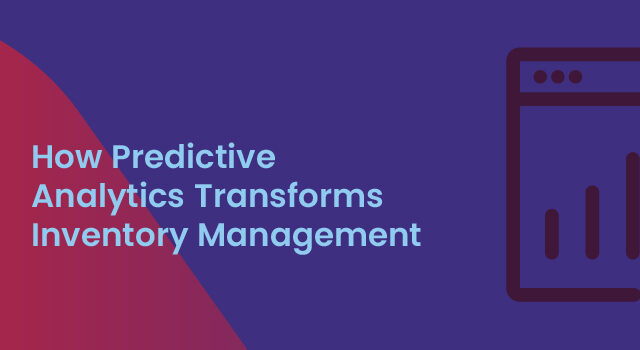Inventory plays a central role in the business world. It’s an asset that supports production and sales and is a crucial aspect of effective inventory management. Businesses must also accurately calculate the beginning inventory for financial reporting.
Beginning inventory is a key component in the Cost of Goods Sold (COGS) formula. The latter formula measures the direct cost of the items the business sells. It is, thus, a vital metric in determining the company’s gross profitability. If the beginning inventory is wrong, the COGS calculation and the financial statements will be incorrect.
Beginning inventory provides a starting point for tracking inventory movements through the accounting period. Use it to analyze trends, identify waste, and improve ordering and production.
What is the beginning inventory formula?
The beginning inventory is the value of all products on the shelves, ready for sale, on the first day of your accounting cycle.
Where:
- Beginning Inventory: the inventory value at the beginning of an accounting period.
- COGS: the total cost of goods you sold over the previous accounting period. It includes materials, labor, and overhead costs directly associated with goods production.
- Ending inventory: this is the inventory value at the end of the previous accounting period.
- Inventory purchases: the cost of all the inventory you bought in the previous accounting period.
Your beginning inventory is crucial for operations and accounting management.
Use detailed inventory data as follows:
- Identify demand trends.
- Avoid overstocking and stockouts of popular items.
- Plan future production and purchase orders.
- Manage inventory levels to identify slow-moving or obsolete products
- Offer discounts or promotions before the items are stale or unsaleable.
- Reconcile your inventory accounts for each accounting period.
- Identify stock discrepancies and losses in each period.
The role of beginning inventory in financial statements
Beginning inventory impacts financial statements. Here’s how it affects each of the financial accounting sectors:
Balance sheet: Inventory is an asset on the balance sheet. Knowing the correct value ensures the accuracy of your financial statements. Creditors, investors, and the tax authorities require an accurate balance sheet.
Income statement: Beginning inventory is a key component in calculating COGs. COGS must be accurate to understand profitability. If your starting inventory is inaccurate, the resulting COGS is inaccurate, and so are your profit margins.
Cash Flow statement: With an accurate starting point, you can avoid over-ordering and tying cash up in unsold goods. Optimize your cash flow by ensuring you only buy what you need. For this, you need an accurate beginning inventory.
Steps to calculate beginning inventory
- Step 1: Determine the Cost of Goods Sold (COGS) Use the COGS for the previous period. This is the total direct cost of producing the goods you’ve sold during that period. It should appear as a line on your financial statements.
- Step 2: Find the Ending Inventory value. Ending inventory for the previous period represents the inventory value after accounting for all the goods you’ve sold.
- Step 3: Calculate total purchases during the period. This is the sum of the amount you spent buying inventory.
- Step 4: Apply the formula to find the Beginning Inventory. Use the amounts from the first three steps to calculate the beginning inventory.
Ending Inventory for the previous period: $8,000
Total purchases for the period: $6,000
Following the formula, we get:
Beginning inventory = ($10,000 + $8,000) – $6,000
= $18,000 – $6,000
= $12,000
The beginning inventory for this small business is $12,000
Common challenges in calculating beginning inventory
You may face challenges when calculating the beginning inventory. Still, given the importance of accurate inventory in managing operations and accounts, you must overcome the problems. Challenges include:
Data accuracy
Problems with data accuracy problems cut through all businesses. Inaccurate data will affect your inventory holding and ability to manage customer expectations. If you’re unsure of your on-hand stocks, how confident are you that you will have the products to satisfy customer demands?
Mistakes in recording sales, purchase receipts, and previous ending inventory lead to inaccurate beginning inventory. On an SKU basis, you may show line items with quantities that don’t exist.
Mistakes include inaccurate quantities or inconsistent application of costing methods.
Inventory valuation
Businesses typically use one of three valuation methods for valuing inventory. Inconsistent application of the methods will affect the beginning inventory value.
Inventory valuation methods include:
- First in, first out (FIFO): Assumes that the oldest items bought are sold first. FIFO can inflate the opening inventory in periods of high inflation. FIFO will also lower COGS, increasing gross profit. This is because products bought earlier generally cost less than those bought later.
- Last in, first out (LIFO): Assumes that the items bought most recently are sold first. LIFO may reduce the value of the opening inventory in inflationary periods. COGS will be higher and gross income lower.
- Weighted average cost: Calculates the average cost per item available for sale in the period. Using this method, the beginning inventory value will fall somewhere between LIFO and FIFO.
Inventory adjustments
You will need inventory adjustments from time to time. These adjustments can complicate beginning inventory calculations. The following adjustments are common:
- Inventory write-downs: When inventory is stolen, damaged, or obsolete, you’ll write down the inventory value. This will affect the beginning inventory. The accounting transaction lowers the asset value and records an expense.
- Returns: If a customer returns goods, you must determine whether the items were part of the beginning inventory and adjust it.
- Stock discrepancies: Physical stock counts may reveal stock discrepancies. You must correct the on-hand stock for accurate beginning inventory. and place orders to replenish stock. Understand what caused the discrepancies and take corrective action to prevent recurring discrepancies.
Impact of beginning inventory on business decisions
Inventory management
Beginning inventory determines how much extra inventory you need to meet demand.
Inventory forecasting
Beginning inventory provides a baseline for forecasting future demand. By incorporating the stock on hand, businesses will know how much to order or produce to cover forecast demand.
Budgeting and financial planning
Beginning inventory is the basis upon which the COGS is calculated. This is a key component in establishing gross and net profit. The beginning inventory will also indicate the amount of stock the business must order to honor lead times and replenish stock. This information feeds into the expense report and cash flow analysis.
Performance analysis
Beginning inventory is a key input for several operational performance measures, including:
- Inventory turnover ratio: Measuring how effectively the company manages its inventory.
- Days inventory outstanding: A measure of how long the company holds inventory before selling it.
- Working capital management: Beginning inventory determines how much money is tied up in inventory at the start of a period.
- Inventory accuracy and control: Discrepancies between actual and recorded beginning inventory may indicate issues like shrinkage, theft, or data inaccuracies.
The case for inventory management software
Inventory management software offers businesses significant benefits. It provides solutions for streamlining operations and improving efficiency. When choosing software look for the following features:
-
- Real-time inventory monitoring: Provides up-to-date inventory with locations, and movements across multiple warehouses. Real-time data helps to prevent stockouts while reducing stockholding. It enables accurate demand forecasting and efficient order fulfillment.
- Integration capabilities: The platform must integrate with your current business systems. These may include Enterprise Resource Planning, Point of Sale, and accounting software. Integrated systems ensure seamless data flow. They also reduce manual input and the possibility of errors.
- User-friendly interface: A user-friendly interface simplifies tasks. It is easier to train new users, reduces errors, and encourages user adoption.
- Reporting and analytics: Track key metrics using advanced reporting and analytics. Easily accessible reports enable data-driven decisions and trend identification.
Well managed inventory drives enhanced performance
Accurate beginning inventory provides a clear understanding of your business’s financial health. Use your inventory data to track trends, identify opportunities for improvement, and drive your business toward greater success and profitability.
Create a competitive advantage with well-managed, accurate inventories. Implement integrated demand planning tools to boost operational efficiency and profitability with effective systems.




